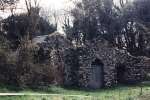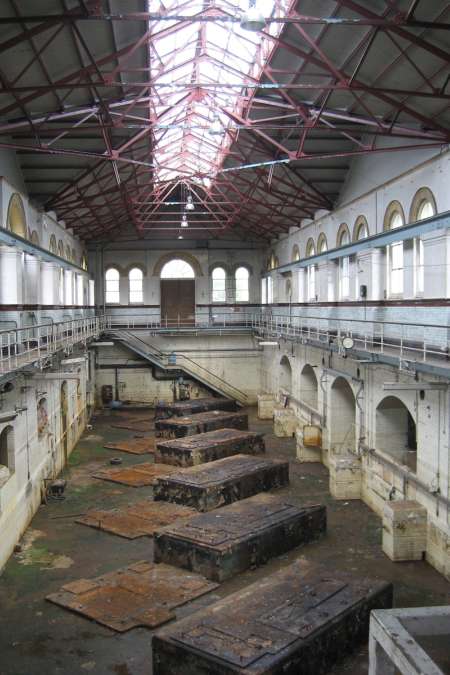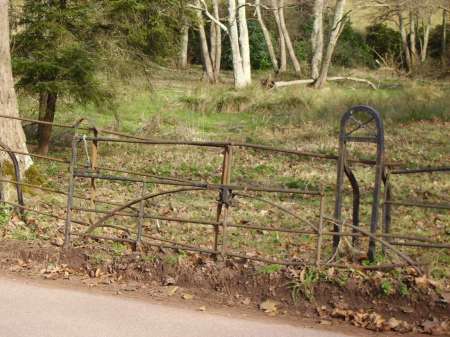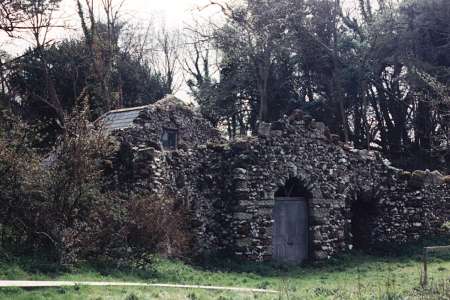Recession puts historic buildings at risk
The new Heritage at Risk Register shows that the recession has led to the decline of historic buildings


The Heritage at Risk Register 2010 has revealed that the recession has had a significant impact on the rescue of historic buildings, according to English Heritage.
Between 1999 and 2007, the number of Grade I- and II*-listed buildings on the ‘at risk' register fell by 17%, but since then, the rate of rescue has ground to a halt, with many of the 1,218 buildings and monuments on the register being left to fall into neglect or decay.

Abbey Mills Pumping Station, Newnham, 1910-14
In 1999, one in six buildings on the ‘at risk' register was fully economic to repair; now, it's fallen to one in eight. The ‘conservation debt' - the difference between the cost of repair and end value of the buildings - is now about £465 million, a 10% rise from 2009.
The new register also showed that 3% of Grade I- and II*-listed buildings are at risk, as are 7% of conservation areas, 16% of scheduled monuments, 6% of registered parks and gardens, 14% of registered battlefields and 16% of protected wreck sites.

Oxton House, Devon, has neglected 19th-century pleasure grounds and plantings
Dr Simon Thurley, chief executive of English Heritage, commented: ‘The fact that historic buildings at risk are getting harder to save is very worrying. With decreased house prices, the difficultly of getting mortgages and the uncertainly of the jobs market, private buyers and small developers are less likely to invest in a building at risk. We might also see more buildings coming onto the Register as people spend less on maintenance and repair.
Exquisite houses, the beauty of Nature, and how to get the most from your life, straight to your inbox.
‘Fewer large developers and construction companies are embarking on big regeneration projects and some are having to halt work or even abandon a site altogether. And where public bodies and development agencies could previously support such schemes, they, too, are unable to invest.

Cellars of former Cranford House, Hillingdon, from about 1722, suffering from structural weakening
‘Local authority cuts, both in terms of funding and conservation staff, could result in catastrophic losses. Sixteen percent of historic buildings at risk are the libraries, schools, hospitals, police stations and other typically Victorian or Edwardian edifices owned by local councils and greatly cherished by local communities.
‘Neglect is a slow, insidious process whose costly damage takes time to become clearly visible. Cuts in both private and public spending are currently inevitable, but English Heritage is well-equipped to guard against the loss of Britain's greatest treasures and to suggest effective and economical strategies to protect our national heritage.
'We also hope that our Heritage at Risk programme will gives communities - local people, local authorities and the larger community of both official and voluntary heritage groups - accurate information about the condition of local neighbourhoods, and encourage them to become actively involved in restoring what is precious to them.'

Garden grotto near St Giles House, Dorset, built in about 1851-53
To order the full Heritage at Risk register and learn more about getting involved with conservation in your local area, visit www.englishheritage.org.uk/about/news/heritage-at-risk-2010
To comment on this article, use the comment box below, or email us at clonews@ipcmedia.com. Read more about the countryside
For more news stories like this every week subscribe and save
Follow Country Life on Twitter
Country Life is unlike any other magazine: the only glossy weekly on the newsstand and the only magazine that has been guest-edited by His Majesty The King not once, but twice. It is a celebration of modern rural life and all its diverse joys and pleasures — that was first published in Queen Victoria's Diamond Jubilee year. Our eclectic mixture of witty and informative content — from the most up-to-date property news and commentary and a coveted glimpse inside some of the UK's best houses and gardens, to gardening, the arts and interior design, written by experts in their field — still cannot be found in print or online, anywhere else.
